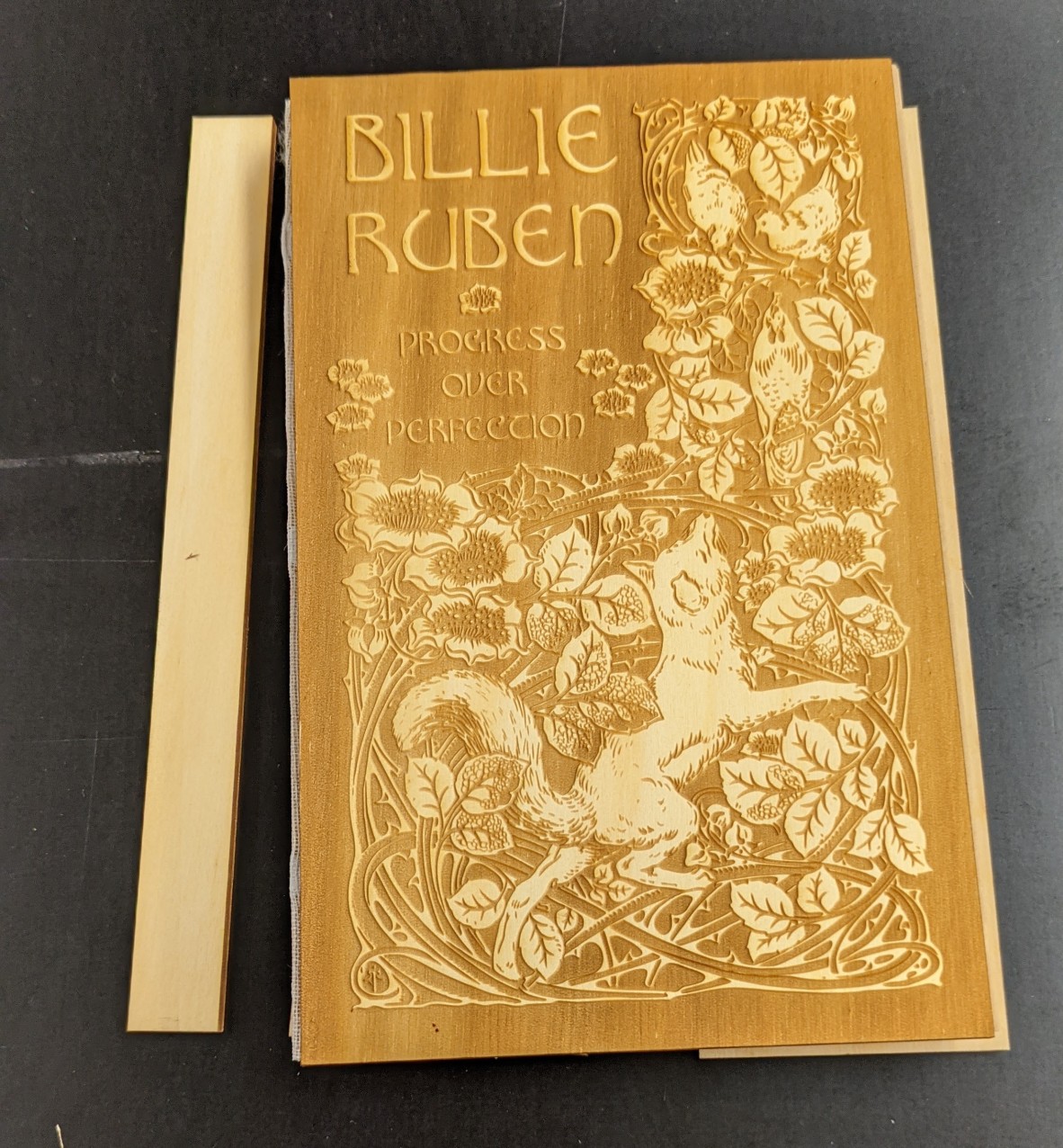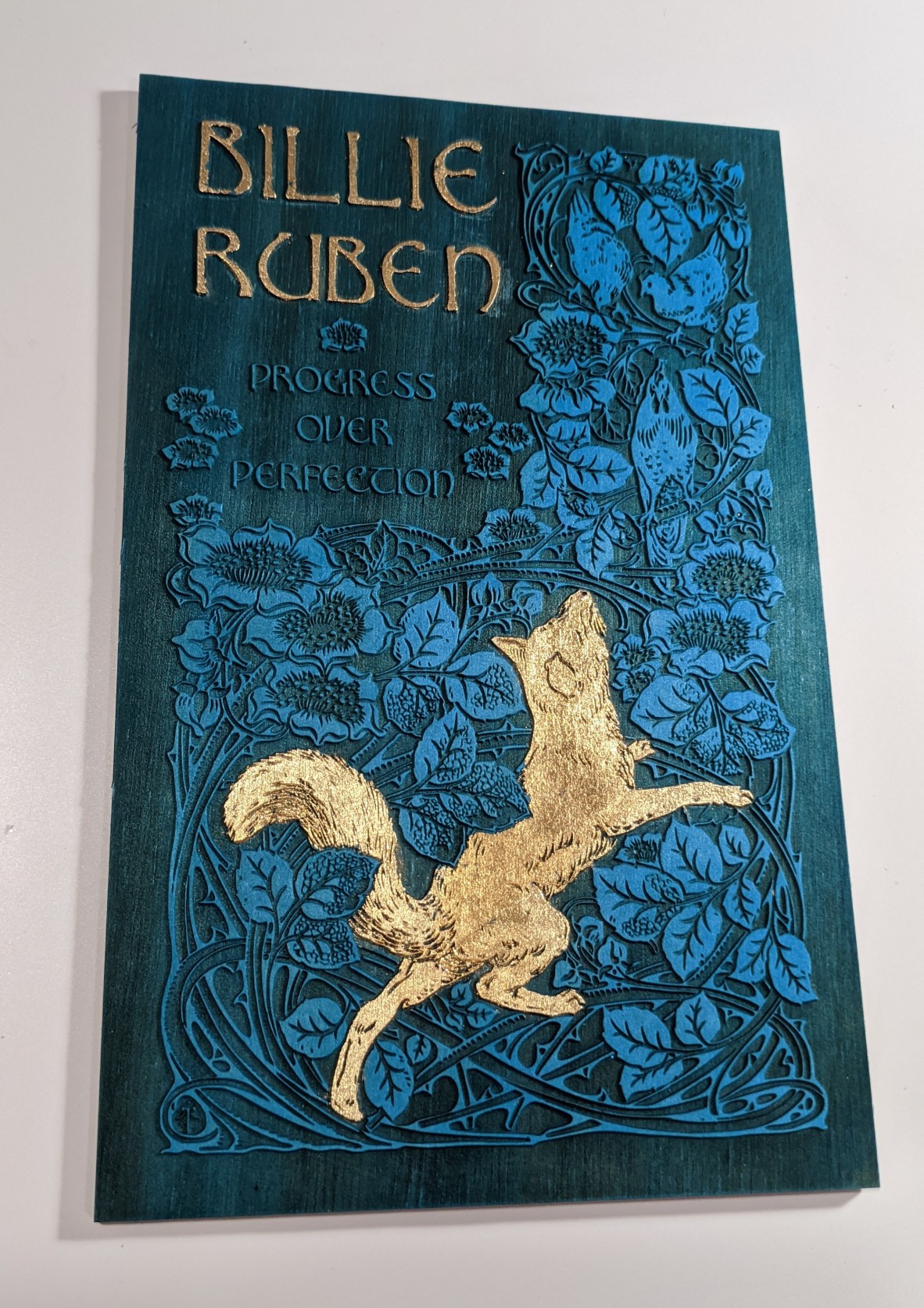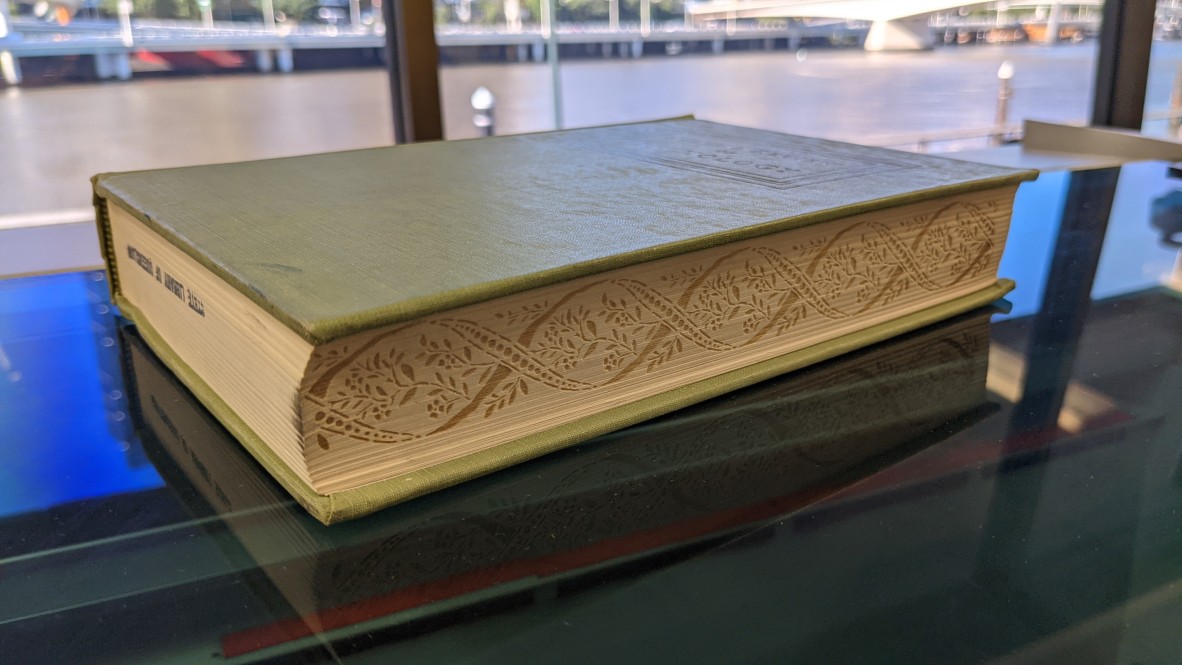Digital Fabrication meets traditional handcrafts to make these beautiful books
By Billie Ruben | 25 May 2021

Laser etched plywood book cover depicting a fox and hens in a bramble bush in Art-Nouveau style
We’re library people. We love books! And not only for their prose; bookbinders throughout the ages have elevated their craft to an artform. But the skill is dying out, it takes time to craft a stunning book, and unfortunately modern consumers aren’t usually prepared to pay the price.
That’s where digital fabrication can help. Tools such as the laser cutter can allow us to make beautifully intricate works in a fraction of the time, with highly repeatable results. These technologies also enable folk who don’t have the dexterity that would otherwise be required to make their dreams a reality.
Time and dexterity aren't the only hurdles for would-be bookbinders; many tools for traditional handcrafts (such as bookbinding and millinery) are no longer produced and buying them can be extremely expensive as supplies dwindle. This is another way digital fabrication can help: it enables us to recreate the tools of old at a fraction of the cost, opening the craft up to those who would otherwise be left out for financial limitations.
It’s for these reasons that the Fabrication Lab (a publicly-accessible makerspace at The Edge) exists! We want to help prepare people with the digital skills of the future, to keep traditional crafts alive and to breathe life into new ones.
To that end, we have been prototyping laser-etched books using the tools here at the Fabrication Lab. The covers of our books are plywood which has been laser-etched using artwork that was scanned from various public-domain books of old, and the digitised using free and open source software, inkscape (check out our wiki page for more info on that).

After etching the wood was dyed using acrylic ink and then gold leafed in selective areas (which is a surprisingly easy and cheap process). This wood was then bound into a cover and attached to a hand-sewn book.
Pressing is a key process throughout a book’s construction, and to that end we are working on a press design for CNC routing, which we will be prototyping soon. This press would likely also serve printmakers well, and be suitable for pressing flowers, if that takes your fancy!
We’re also hoping to combine the press and the laser and try our hand at embossed leather: cutting the stamp on the laser cutter and using the press to emboss leather using it. This method would emulate traditional book production very closely.

We’ve also been dabbling with a technique we’ve yet to see elsewhere: embossing the foredge of a book using the laser cutter. The results are quite pretty! If we do say so ourselves.
The hand-bound books and the presses will be highlighted 2 upcoming workshop series: making artists’ books from the work collected from children for our Great and Grand Rumpus project, and then later in the year to make custom journals.
As with everything we create, we will be releasing this workshop plan and all the files needed to make your own presses over on our wiki
If you would be keen to participate in one of these workshops, keep an eye on The Edge newsletter, where we will be launching the dates. You can sign up here.
Comments
Your email address will not be published.
We welcome relevant, respectful comments.